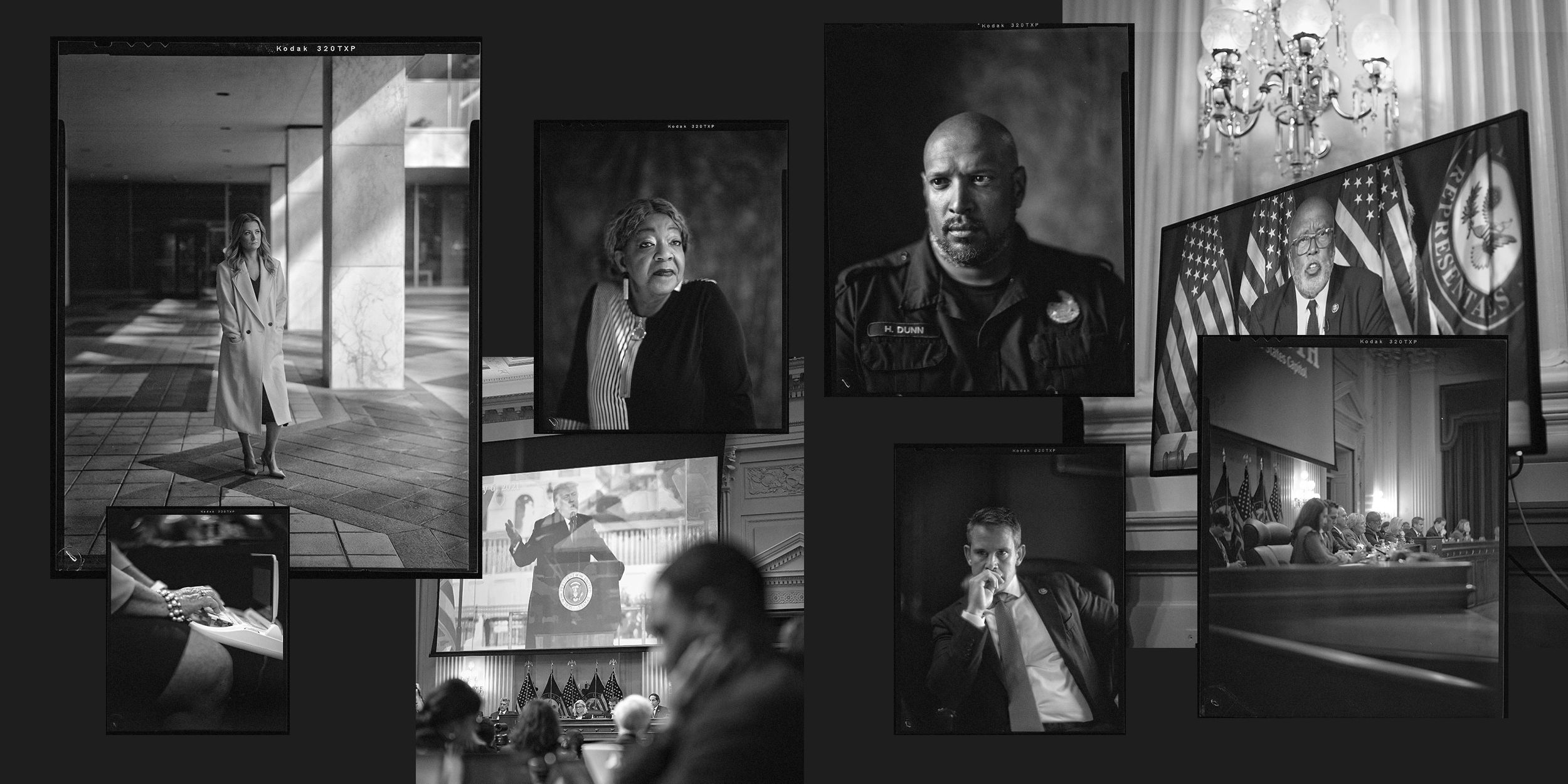“I hope Americans see these hearings for what they are: an attempt to cut through all the obfuscation and the lies, the whitewashing, and see the truth.”
WASHINGTON, D.C., POLICE OFFICER DANIEL HODGES
U.S. Capitol Police Officer Harry Dunn, former Capitol Police Sgt. Aquilino Gonell, Washington, D.C., Police Officer Daniel Hodges and former Washington Police Officer Michael Fanone gave dramatic testimony at the committee’s first public hearing about fighting off the mob on Jan. 6. The men then became permanent fixtures of the hearings, attending several more and sitting in the front row.
Dunn said he will also work to hold the committee accountable. “We did our job that day, and now it’s up to you. … Now you protect us and protect this country,” he said.
Fanone said that before the hearings he’d had a “hunch” that there was more to Jan. 6 than Trump’s rhetoric inspiring the mob. The testimony confirmed to him that the attack was “a multifaceted plot that involved a lot of different entities within the government. … It was infuriating.”
Gonell expressed disappointment that many people in positions of power refused to testify, but he said the hearings gave him “kind of, like, a confirmation of what I thought happened that day: The president gathered the mob. He didn’t do anything to help us — until towards the end.”
The officers have expressed frustration that some, including Republican members of Congress, have downplayed what happened on Jan. 6. “There’s going to be political leaders who stoke the lies. And they continue to do that today,” Fanone said. “But now they’ve got to confront my body-worn camera footage.
Hodges said he testified “to make sure that the truth will out, that everyone knows what happened and that no one can pretend otherwise.”
